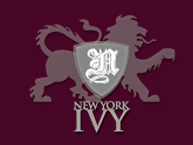The New York Times에서 공부하는 Learning Network 입니다!
유명 Writer들이 다루는 주제와 표현들을 꾸준히 접하여 봄으로써 프로가 되어보겠습니다!
News Q’s | ‘Star Wars: The Force Awakens’ Smashes Box Office Records
By SHANNON DOYNE

Chewbacca (Peter Mayhew), left, and Han Solo (Harrison Ford) together again, in “Star Wars: The Force Awakens.” Related ArticleCredit Film Frame/Lucasfilm
아래의 Article 을 먼저 읽은후 Article이후의 5문제를 답해주세요~
Conventional wisdom holds that mass moviegoing is the pastime of another era. The cultural heat emanates from television now. Hollywood only churns out banal sequels and forgettable action films. Netflix is the new multiplex.
Well, the movies just struck back.
In an astounding display of cultural and commercial domination on a global scale — one with little precedent in the history of Hollywood — the Walt Disney Company’s “Star Wars: The Force Awakens” earned roughly $517 million in worldwide ticket sales, smashing multiple box office records, even after accounting for inflation.
It was the largest opening weekend in North America, with $238 million in ticket sales. To put that figure into perspective, consider that “Avatar” (2009), which analysts consider to be the highest-grossing film in history, with $3.1 billion in global ticket sales, took in $85 million over its first three days in domestic release; the previous record-holder for a December opening was “The Hobbit: An Unexpected Journey” (2012) with $87.5 million.
“Star Wars” has long been in a league of its own. But “The Force Awakens” also represents the way that Hollywood hopes to battle back after years of soft domestic ticket sales, piracy and competition from video games and television. Focusing on nostalgic film properties with familiar, often cherished characters, studios are assembling Death Star-sized movies that can capture the public’s imagination in ways reminiscent of the earliest years of blockbusterdom, before the hyper-fragmentation of pop culture.
Consumers are just beginning to see this strategy — “Jurassic World,” which took in $208.8 million over its first three days in June, was an early example — but studios have been engaging in a behind-the-scenes arms race for several years. The results are just now coming to market.
Disney is working on four more “Star Wars”-related movies and plans to restart the “Indiana Jones” series. Three more “Avatar” films are on the way from 20th Century Fox. Universal has a “Jurassic World” sequel planned for 2018 and is working to combine its classic monster properties (Dracula, the Mummy, Frankenstein) into one huge film series. Warner Bros. will release “Batman v. Superman: Dawn of Justice” in March; together with Legendary Pictures, Warner has a King Kong versus Godzilla film in the works.
Hollywood has repeatedly missed the mark with mindless remakes and sequels, but “Star Wars: The Force Awakens,” which cost an estimated $350 million to make and market, also represents an effort to improve the quality of mass-audience films. Lucasfilm, the Disney unit that controls the “Star Wars” franchise, hired an experienced director, J. J. Abrams, who veered sharply back toward old-fashioned filmmaking, relying less on computer-generated imagery and more on constructed sets.
Reviews for “The Force Awakens” were 95 percent positive, according to the Rotten Tomatoes website, which aggregates critical response. “The Force Awakens,” the seventh “Star Wars” movie, focuses on a young woman, Rey, as she becomes entwined with efforts — led by General Leia, no longer a princess — to locate a vanished Luke Skywalker and generally save the galaxy from evil combatants called the First Order.
“The studios finally seem to be remembering, after years of over-reliance on visual effects, that moviegoers like a story,” Jeanine Basinger, a film studies professor at Wesleyan University and the author of books including “The Star Machine,” said on Sunday. “It can be a story we are familiar with. It can be a serialized story. But give us, please, we’re begging you, a story of some kind.”
“The Force Awakens” arrives at a time when Hollywood has finally started to better understand how to use social media to turn consumer interest into a frenzy. The film also benefited from improved technology in theatrical distribution; the rise of digital projection and advance online presales allowed theater owners to quickly add extra screenings to meet opening-weekend demand.
“Theaters in some cases took what we originally planned and expanded it in real time to three or four times the capacity,” said Dave Hollis, Disney’s executive vice president for distribution.
The box office and critical results represent a personal triumph for Robert A. Iger, the chief executive of Disney, who engineered the $4 billion purchase of Lucasfilm in 2012, faced down skeptics on Wall Street who believed the price was too high and essentially ghost-produced the film. (He watched dailies, oversaw elements of the marketing and flew to Harrison Ford’s side when the actor injured himself on the set.)
Mr. Iger declined a request for an interview on Sunday.
Executives at rival studios spent the weekend marveling at the way Disney managed the film’s release, in particular praising the entertainment company’s use of its vast empire — theme parks, television networks, an online video studio, consumer products, video games, cruise ships — to promote the movie. “Not one misstep,” the marketing chief at a rival studio said begrudgingly, speaking on the condition of anonymity because of a reluctance to publicly praise a competitor.
Disney also pulled off one of the hardest tricks in event film marketing, which was timing the surge of advance hoopla to crest just as “The Force Awakens” arrived in theaters.
The studio may also have fixed a gender imbalance in “Star Wars,” which has traditionally been much more of a male property. “The characters created for this film, in particular the female character at the center, Rey, made this franchise feel modern and much more appealing to women,” said Greg Foster, the chief executive of Imax Entertainment.
On Sunday, Disney said that 47 percent of the gross receipts for “The Force Awakens” came from 3-D screenings, tickets that sell for a $3 to $5 premium. About 58 percent of the audience was male. About 63 percent of the audience was 26 or older.
The movie managed the staggering ticket sales even in the face of worries about terrorism (theaters were evacuated in New Jersey and California over the weekend in what turned out to be false alarms).
But the otherworldly success of “The Force Awakens” may not be enough for Disney to allay investor concerns about a slowing ESPN, the cable sports network that for years has delivered about 45 percent of Disney’s annual operating profits. Disney’s stock price declined 4 percent on Friday — even as reports of record-breaking box office returns poured in — after a downgrade to “sell” by a widely followed analyst, citing concerns about ESPN’s ability to sustain itself as some consumers forgo cable subscriptions. Disney is also facing worries about theme park security.
But dealing with those worries would have to wait for another day. For Disney, it was celebration time on Sunday.
“We’re setting records in real time,” a jubilant-sounding Mr. Hollis said. Asked if Disney’s distribution and publicity teams were ready to collapse after the hard push, Mr. Hollis noted that the film had not yet opened in China, where release is set for Jan. 9.
“Collapsing is what February is for,” he said.
————————————————————————————–
A version of this article appears in print on December 21, 2015, on page A1 of the New York edition with the headline: A Hollywood Empire, Long Dormant, Strikes Back
After Reading
1. How much money did the movie take in globally? How much of that was ticket sales in North America?
2. How much did the movie cost to make?
3. What percentage of the ticket sales were for 3-D screenings?
4. Why does the article characterize efforts to promote the movie as having a “nostalgia-driven strategy”?
5. What other characters from the past will appear in new movies or sequels in the near future?



